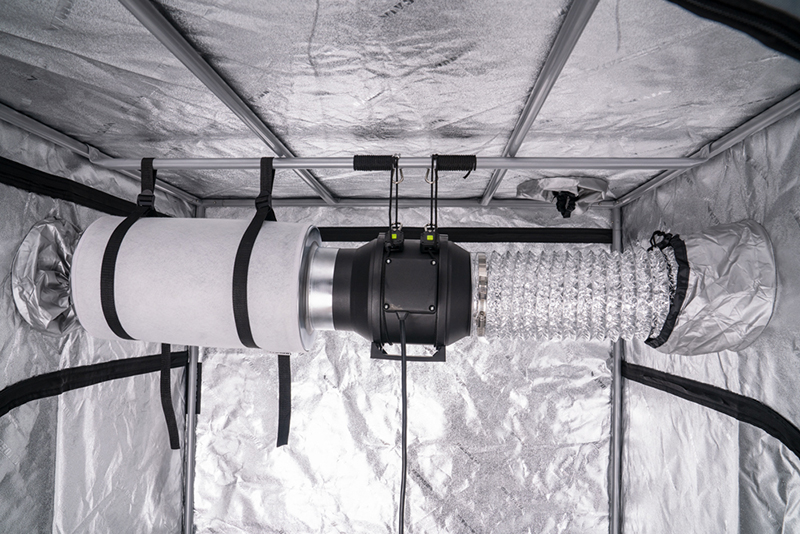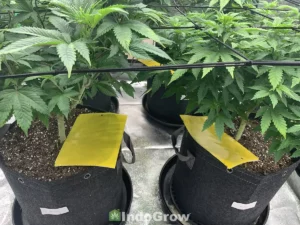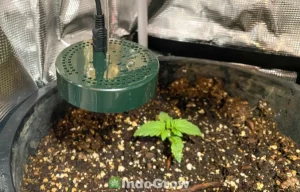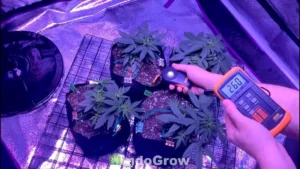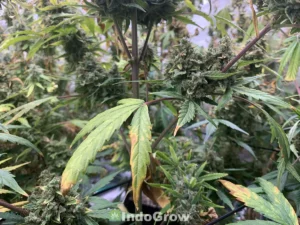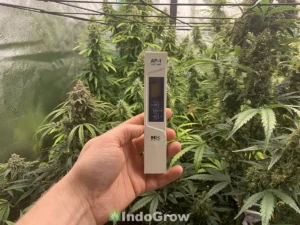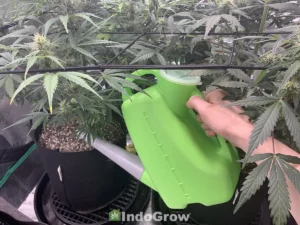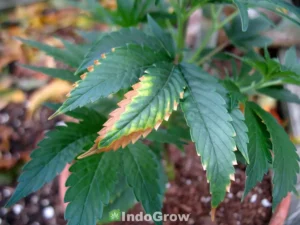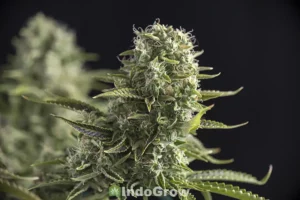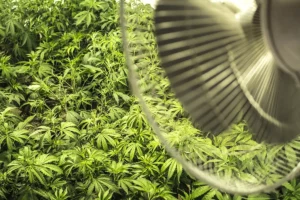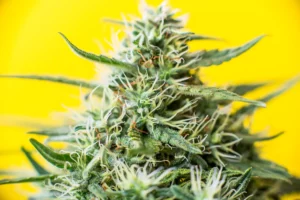Proper grow tent ventilation serves several functions: providing growing plants with CO2 for photosynthesis, removing excess heat, and controlling humidity. This article will outline the main types of fans used in home grow operations, and give you the information needed to select the right equipment to vent your grow room.
Table of Contents
- Why Do I Need a Fan for My Grow?
- Best Fans for Grow Room Ventilation
- How Does Ventilation for a Grow Tent Work?
- Grow Tent Ventilation at Night
- Grow Tent Ventilation Setup
- Best Exhaust Fans for Grow Room
- What Type of Ducting for Exhaust Fans?
- Best Carbon Filter for Exhaust Fans?
- Best Oscillating Fans for Grow Room
- Intake Fans
- Summary
Why Do I Need a Fan for My Grow?
Proper ventilation is essential for a cannabis plant to grow and produce quality buds. Fresh air is necessary for every plant to photosynthesize, since the growing plants are pulling CO2 from the air whenever the lights are on. Without continual access to fresh air, the plants’ ability to photosynthesize will slow down, and eventually stop entirely as they use up the CO2 in the room.
In addition, fans will move hot, humid air out of the grow room and pull in cooler, dryer air. This process keeps your plants from overheating, or becoming moldy due to excess humidity. Carbon filtration in your fan system will also remove odor from the air, keeping the surrounding area from smelling like marijuana.
Best Fans for Grow Room Ventilation
The main type of fan used in grow rooms are exhaust fans. These fans contain a carbon filter to remove odor and other impurities from the air, as well as a duct system to direct the outgoing air to a destination of your choice. These fans are essential to remove hot, stale air from your grow room, and they create a negative pressure inside the grow room which will naturally pull in fresh air from the outside.
The second type of fan used in grow rooms is one or more oscillating fans. These fans are the same type you might have around your house already, and are used to circulate the air that is already inside the grow room. This process helps leaves in the understory of your plant gain better access to CO2 rich air, and distributes heat more evenly around the room.
Some growers also choose to use an intake fan to pull fresh air into their grow room. Most small home grows will not require this, since the negative pressure created by the exhaust fan will pull sufficient air into a room. However, some larger grow rooms can benefit from this, especially if they have limited space for vents to intake fresh air. Additionally, pulling in fresh air mechanically can prevent odor from leaking out of passive intake vents, although with a proper exhaust setup odor leak from these vents is usually minor.
How Does Ventilation for a Grow Tent Work?
The exhaust fan is generally hung inside the grow room or grow tent from the ceiling, and will have a carbon filter attached to filter out weed odors. The fan then pulls air out of the grow room through its ductwork and releases it either outside or into another room of the house. If releasing your air outdoors, it is important to consider that the release of warm, humid air may produce visible clouds of condensation, which can be problematic for grows in illegal states.
The use of an exhaust fan will create a negative pressure differential inside of your grow room. This allows small vents at the base of your room or tent to pull outside air in without the need of an intake fan. In order to reduce the risk of insects or other debris being pulled in, it is recommended to cover your intake vents in a fine mesh.
Finally, the use of oscillating fans creates airflow within the room itself. Without oscillation, the fresh air from the intake vents is unlikely to penetrate the entire room, and you can end up with pockets of stale, hot air that are damaging to the plants, especially in the plant’s lower canopy.
Grow Tent Ventilation at Night
If you would like to save energy, the exhaust fan can be turned off at night, at the same time as the lights. Because the cannabis plant is only photosynthesizing when the lights are on, fresh air is less important. In addition, the heat in the grow room will naturally lower after the lights turn off for the night. However, if energy is not a concern, leaving the exhaust fan on 24 hours a day is a perfectly reasonable option and will ensure that your plants don’t get too warm or humid overnight.
Oscillating fans, on the other hand, should never be turned off. Allowing “dead air” to build up will increase the risk of mold or pests on your plants, so some gentle airflow at all times is recommended.
Grow Tent Ventilation Setup
The exhaust fan and carbon filter should be placed as high up as possible in your grow room or tent, since hot air will naturally rise to the top of the room. A ring clamp and aluminum tape are then used to connect the fan to the ducting. The ducting is typically routed out through the top of the tent and on to wherever you would like the exhaust air to end up.
An oscillating fan should be placed at the base of your plants in order to push fresh air over their soil and lower leaves. If your exhaust fan does not oscillate, one or more additional oscillating fans should be mounted near the top of the plants to push air over their crowns.
If you choose to use an intake fan, this should be mounted at the bottom of the tent, where the passive intake vents would be.
Best Exhaust Fans for Grow Room
An inline duct fan, also known as an active exhaust fan, is the ideal type for growing cannabis indoors. When looking at fans, you should select one that has a CFM, or cubic feet per minute, that is 1 to 3 times the size of your grow space in cubic feet. This means that every minute, the fan will completely replace the air in the grow tent one to three times. While a 1 replacement per minute may be sufficient for some grows, plants being grown in warmer, more humid climates should shoot for 2 to 3 full replacements per minute.
You can find the minimum CFM you need by multiplying the length, width and height of your grow tent to find its volume in cubic feet. For instance, a standard 4x4x6.6 tent will need a minimum CFM of 105.6 for one replacement per minute, or 211.2 for two replacements per minute.
If there are bends in your ducts and/or heat is an issue in your tent, then a slightly higher CFM may be necessary. For 4×4 tents, I use a 6 inch fan running on low. For tents smaller than 4×4, a 4 inch fan will suffice.
What Type of Ducting for Exhaust Fans?
Aluminum ducting is generally considered best, as it is long lasting and doesnt collect much dust. Insulated ducting is another option, however this type is stiffer and can collect dust on the insulation over time.
Equally important is the length of the ducting, with 3-4 feet being ideal. The longer your ducts are, the more work your fan will have to do to push air out. If you need to have ducting much longer than 4 feet to reach outside, consider upgrading to a fan with higher CFM to account for the extra work it must do to push air through a long duct.
One final consideration is the angle of your ducting. Avoid any sharp angles if possible, since air will move through straight or gently angled ducts more efficiently. Adding a 90 degree angle to your duct can lower the efficiency of your fan by up to 50% and cause it to underperform.
Best Carbon Filter for Exhaust Fans?
The carbon filter attaches to the front of the fan, and is an essential part of the exhaust process. The carbon filter cleans the air passing on to the fan, removing the majority of weed odor from the air. Additionally, the filter traps dust and pollen in the air, which keeps your ductwork clean and helps reduce potential allergies. The size of the filter should correspond to the size of the fan (6 inch filter for a 6 inch fan, or 4 inch filter for a 4 inch fan).
Most filters will also have an option to add a prefilter sleeve to catch larger pieces of dust and debris. This extends the life of your filter and keeps it from clogging. The prefilter should be discarded and replaced after each grow, while the carbon filter shouldn’t need to be replaced for 1 to 2 years depending on how consistently it is used.
Best Oscillating Fans for Grow Room
In order to have air penetrate all layers of the cannabis plant, you will need to place at least two fans in the grow tent, one above the plants canopy and one below. In addition, if you have many plants in the same grow room or tent, make sure that you have air blowing from enough angles to reach the top and bottom of every plant.
Oscillating fans which can clip to the bars of your tent can be very helpful, since they will have great flexibility in where they are placed. Alternatively, free standing fans can be used, as long as they can be set to different heights. For larger grow rooms, bladed overhead fans can be an excellent choice to provide a large amount of air movement above the plants.
Intake Fans
Intake fans are an optional addition to increase air flow into your grow room. This type of fan is rarely necessary in a grow tent, since negative pressure inside is sufficient to pull air in. However, they can be useful in particularly large home grow operations, such as a basement or bedroom that has been converted for growing. These fans are placed at the bottom of the grow room, and actively pull fresh air in to circulate throughout the room.
Besides increasing fresh air flow, an intake fan can eliminate odor leaking from passive vents, which can be reason enough to install one in your grow tent if you are particularly worried about odor escaping.
Summary
In order to provide your cannabis plants with fresh, CO2 rich air, and keep their temperature and humidity at a healthy level, you will need to install both an active exhaust fan and two or more oscillating fans.
The exhaust fan pulls air through a carbon filter and releases it outside of your grow room or tent. This creates a negative pressure differential which will passively pull fresh air into your grow room. A constant supply of fresh air is essential for your cannabis plants to photosynthesize and grow to their full potential.
Oscillating fans are placed inside the grow room, and are used to push air over the plants. You will need a minimum of two of these fans, one to blow air over the crowns of the plants, and one to blow air over the soil and lower leaves. This ensures that each area of the plant receives sufficient CO2 to grow, and also keeps pockets of hot, still air from developing.

Rocky Horton
Author
Rocky Horton is an experienced cannabis grower and the founder of IndoGrow. The IndoGrow editorial team has over four decades of combined growing experience. Learn more.

